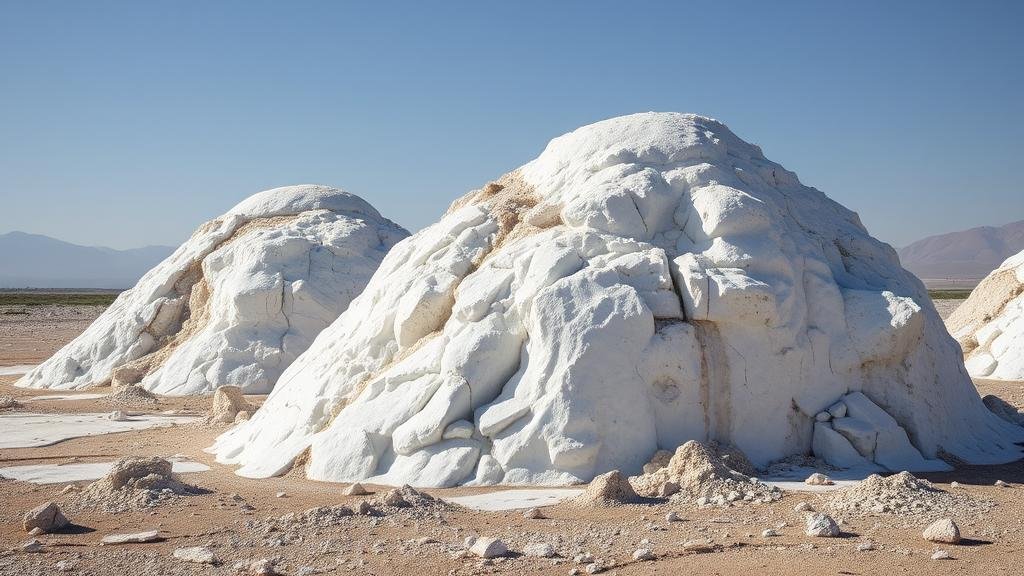Investigating salt domes in Iran, where unique crystalline structures form naturally.
Investigating Salt Domes in Iran: A Treasure Trove for Rockhounds
Iran is a geological wonderland that boasts a remarkable variety of natural formations, with salt domes standing out due to their unique crystalline structures and mineral-rich environments. Rockhounds and mineral collectors have increasingly turned their attention to these fascinating formations, which not only offer aesthetic beauty but also a wealth of geological insights. This article explores the origins, characteristics, and significance of Iranian salt domes, as well as practical tips for enthusiasts interested in collecting specimens.
Understanding Salt Domes
Salt domes are geological structures formed through the movement of halite, or rock salt, within the Earths crust. Over millions of years, tectonic forces can cause large masses of salt to rise through overlying sedimentary layers, creating striking, dome-shaped formations. These structures now serve as repositories for a variety of minerals, making them prime locations for mineral collection.
Unique Crystalline Structures
The salt domes in Iran are characterized by an array of crystalline structures, some of which are unrivaled globally. The geological processes involved in the formation of these domes result in the crystallization of various minerals, producing stunning specimens that entice both amateur and professional collectors.
- Halite (rock salt): Transparent to white crystalline structure.
- Gypsum: Commonly found in fibrous or granular forms, often showcasing distinctive crystal habits.
- Celestine: A mineral frequently associated with salt deposits, exhibiting delicate blue crystals.
Statistics show that Iran contains approximately 250 salt domes, many of which are located in regions such as the Zagros Mountains and the Persian Gulf coast. geological formations can reach impressive depths: some salt domes are estimated to be over 15 kilometers deep.
Significant Locations for Collecting
Several specific locations within Iran are known for their rich deposits of collectible minerals. Rockhounds should consider visiting:
- Salt Desert (Dasht-e Kavir): This expansive area features numerous salt flats and domes and is abundant in brine and salt crystal formations.
- Mount Zagros: This mountain range is renowned for its geological diversity and accessibility to various salt dome formations.
- Persian Gulf Coast: Coastal outcrops near the gulf yield unique specimens influenced by marine conditions.
Rockhound Safety and Best Practices
While exploring salt domes can be thrilling, safety should always be a priority. Enthusiasts should be aware of the following guidelines:
- Wear appropriate gear: Durable clothing, gloves, and sturdy footwear are essential for navigating rocky and uneven terrain.
- Stay hydrated: The hot climate can lead to dehydration, so carry plenty of water and plan breaks accordingly.
- Respect local regulations: Ensure to understand and follow any specific collecting guidelines imposed by local authorities.
Collecting Techniques for Enthusiasts
For those keen on adding to their mineral collections, employing effective collecting techniques can enhance the experience:
- Use proper tools: A rock hammer, chisels, and safety goggles can facilitate specimen extraction without causing damage to the surrounding environment.
- Identify potential sites: Prior research on geological maps will help locate areas with high mineralization potential.
- Document finds: Keeping a record of the location, mineral type, and any relevant information will be invaluable for future reference and display.
Conclusion: A World of Discovery
The salt domes of Iran represent not only geological marvels but also an exciting opportunity for rockhounds and mineral collectors to discover unique specimens. With their stunning crystalline formations and rich mineral deposits, these natural structures offer a blend of scientific intrigue and aesthetic delight. By following best practices and safety measures, collectors can engage in a fulfilling exploration of these fascinating geological wonders. Happy hunting!



